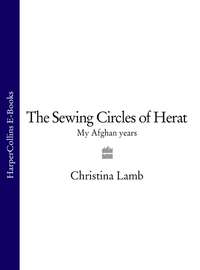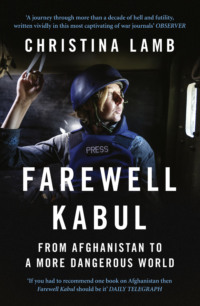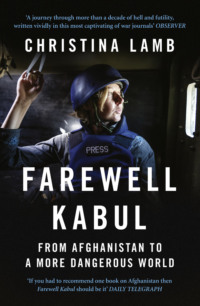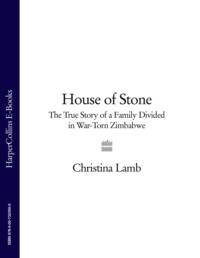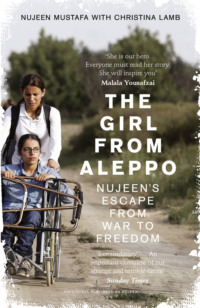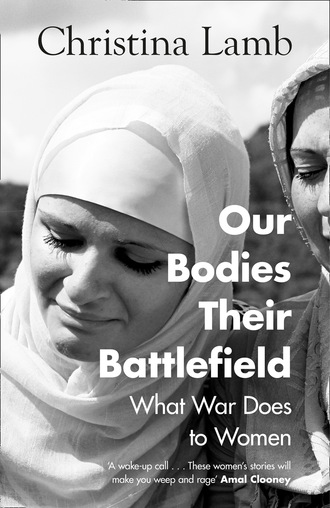
Полная версия
Our Bodies, Their Battlefield
It took me a series of phone calls and a few weeks after leaving Leros to establish that there was not a secret village of rescued Yazidi girls as the refugees had told me, but rather an entire German province. They had been housed in twenty-three secret shelters in twenty-one different towns, mostly remote areas, hidden from view to shield them from unwanted attention.
Dr Blume agreed to let me visit and meet some of the women who were open to sharing their stories. The first indication of how difficult this journey would be came when Shaker Jeffrey, the young Yazidi refugee living in Germany who had agreed to be my interpreter, stopped answering his phone in the days leading up to my flight to Stuttgart.
‘He’s going through a personal crisis,’ said the Yazidi doctor who had put us in touch. When we finally meet, I mutter to Shaker about his elusiveness. Later, in the car, he told me quietly that his own fiancée Dil-Mir was one of the girls enslaved by ISIS and taken to Raqqa, their capital in Syria. ‘Everything was set with my life,’ he said. He spoke excellent English having worked as an interpreter for the US troops in Iraq. ‘I was studying pharmacy at Mosul University, had saved money from my job, and was supposed to marry the girl I loved on my birthday, 4 September 2014. But one month before that, ISIS came and took her.’
Like tens of thousands of Yazidis, Shaker, his mother and five siblings fled to the mountain, scrambling up the rocks in blistering heat. ‘There was no water, no food, no shade – it was an inferno,’ he said. Shaker was desperately searching for apples and water for his family when Dil-Mir called and told him she had been abducted. Oddly ISIS had not taken the girls’ phones so they were able to contact anguished relatives from captivity.
‘The first day they raped her three times,’ he said. ‘Then she was handed on to two brothers who were fighters and made her cook and dance for them … as well as other things.’
In between escorting his sick mum to Turkey, Shaker desperately tried to find ways to get Dil-Mir out. Twice she tried to escape and failed. He even tried disguising himself as ISIS and going to a slave market near Aleppo, hoping to buy her. ‘The last time she managed to call me she told me “I wish I was dead”,’ he said. ‘She sounded so tired.’
Her last text read ‘Come find me Shaker. Hurry.’ Then the calls stopped. Eventually he learnt that she had committed suicide. He showed me the screensaver on his phone of a beautiful girl with long auburn hair, a wide smile and dancing eyes. ‘I couldn’t save her,’ he said. ‘She would have been twenty-one.’
His eyes were wet with tears. ‘That’s why I am here,’ he said after a while. ‘What I saw on the mountain and what they did to my fiancée made my heart like a rock – I no longer cared if I lived or died. First I wanted to fight the people who had done this. But then I decided the best revenge was to get to Europe and help those girls who did survive and to tell the world.’
He bade farewell to his mother and left the camp where they were living in Turkey, then crossed a river into Bulgaria and on through Serbia, Hungary and Austria to Germany, using the $4000 he had saved for his wedding to pay a people smuggler. The journey took twenty-two days during which he was detained several times. In Germany he had been granted asylum and ran a Facebook group of Yazidi activists to try and save other girls, but it was not the life he had envisaged.
The first shelter was a long drive from Stuttgart so on the way I asked Shaker about Yazidism which I had been reading up on since meeting the refugees on Leros. ‘If you Google Yazidism, only one per cent is right,’ he said.
Yazidism is an ancient and mysterious religion originally from Mesopotamia and older than Islam that comprises elements of Christianity, Sufism and Zoroastrianism. They spell it Yezidi, a name which comes from their word Ezid for God and literally means followers of God.
Some say it is not a real religion because unlike Christianity, Islam and Judaism, it has no book. But Shaker insisted this was not true. ‘We had a book called the Black Book with everything written in it but this was stolen,’ he said.
I told him I was surprised to see him wearing a blue shirt – I had read that they have an aversion to blue, as well as to lettuce. He laughed. ‘That’s the older generation like my mum – she won’t eat salad!’
He could not explain the dislike of lettuce but believed the aversion to blue originated from the days of the Ottoman ruler Ahmed Pasha, whose forces carried out one of the many genocides against the Yazidis, as they wore blue hats.
There are around one million Yazidis around the world, of whom 450,000 were in Sinjar. Aside from Germany, many Yazidis lived in the US. Followers worship the sun and a peacock angel who they believe God created before man and then sent to Earth to paint it with the colours of its feathers to create the most beautiful planet. Yazidis do not shower on Wednesdays because they believe this was the day the Peacock Angel came to Earth.
Members of ISIS were told that this peacock angel was Iblis, the Satanic figure which appears in the Koran. Yazidis, they said, were devil worshippers. They seemed to me the most gentle people I had ever met.
We stopped to buy cakes for the women in Schwäbisch Hall, a medieval village of pink and yellow timbered houses and cobbled streets, which looked as if it belonged in a fairy tale. The shelter was nearby but so discreet it took a while to find. Eventually, we drew up in a car park for a series of residential buildings, rather like student hostels, dotted around leafy lanes. To my surprise it was another mental institution. We tracked down the three-storey block where thirty-nine Yazidis were living. A few children were playing on bicycles near the door though not venturing far.
We were shown into a long bare room where the only decoration was a line of children’s colourings of birds, flowers and butterflies pinned on one wall. A group of women drifted in with haunted eyes like figures in an Edvard Munch painting. A number of doors led off to bedrooms in one of which we met Turko.
Afterwards we went upstairs to meet a much younger woman called Rojian, aged just eighteen, who greeted us with an uncertain smile from behind a curtain of mahogany hair.
She was sitting cross-legged on her bed, clad in a black T-shirt and black sweat pants, her only adornment a gold peacock angel round her neck. Like Turko’s, her room was small and bare. The only decoration was a Yazidi calendar. Next to her on the bed was her mobile phone. The word Hope was spelled out in sparkly pink letters on the case.
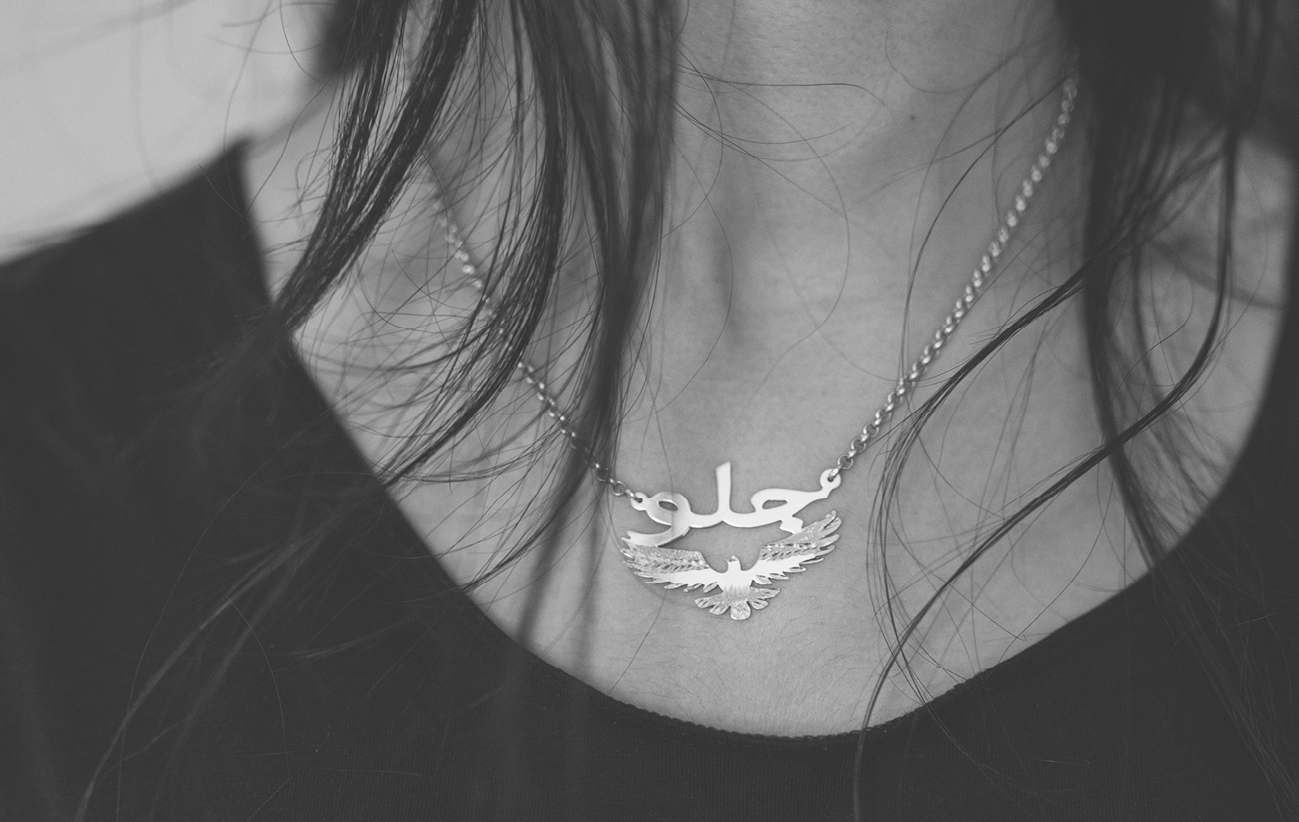
Rojian’s peacock angel pendant (Georgios Makkas/Panos Pictures)
Rojian told me she was the niece of Nadia Murad who had become the international face of the Yazidi tragedy. Murad had been captured at nineteen by ISIS fighters who killed six of her brothers and her mother and when she escaped, was the first to tell her story on the world stage. She had recently been appointed UN ambassador for the Dignity of Survivors of Human Trafficking.
‘Nadia and I were captured together,’ she said. ‘My father who was killed by ISIS was her brother.’
‘This is his name,’ she added, touching the inscription on her peacock pendant.
Rojian was just sixteen on 3 August 2014 when ISIS invaded her village near Kocho. Like most Yazidis in Sinjar, the family were poor and she had left school two years earlier to work in the fields growing potatoes and onions.
‘Some villagers escaped to Mount Sinjar. They thought our sacred mountain would shelter them. But it was far away and we heard that ISIS fighters would kill those who tried so we fled to the neighbouring village where my grandmother [Nadia’s mother] lived.
‘We were kept under siege for almost two weeks,’ she said. ‘All ways out were blocked by ISIS fighters, we could hear their call for prayer from their checkpoints. We stayed in the house, scared to go out. Whenever the power came on, we watched TV and could see the people on the mountain desperately trying to get on the Iraqi army helicopters sent to rescue them or grab the aid packages they dropped.
‘We didn’t know what would happen to us. After nine days an ISIS commander came and gave us an ultimatum – either convert and become a member of the Caliphate or face the consequences.
‘Three days later more fighters arrived. They climbed up onto the highest roofs and called through megaphones for everyone to gather in the primary school. The roads were full of people for the first time since the village was surrounded but we were so scared no one spoke or greeted each other.
‘The men were made to stay in the yard and we women and children were sent upstairs. They told us give us all you have then we will leave. They held out big bags and people dropped in money, phones and jewellery. My grandmother gave her wedding ring.
‘Then they loaded men and teenage boys in trucks and drove them away. A few moments later we heard gunshots. People started screaming “They are killing the men!” then we saw ISIS fighters with shovels.’
As many as 600 men from that village were killed, including her father and five of her uncles – Nadia’s brothers. Only those so young that they didn’t yet have hair on their legs or under their arms were spared and taken away for training.
‘The trucks then came back to the school to get us women and girls. We begged them what have you done to our men but they ordered us to get in. We were scared but we had no choice.
‘They drove us to another school where virgins like me and Nadia were separated from the older women or those with children like my mum. Large buses with curtained windows came to collect us virgins.’
The buses took them to Mosul. The Iraqi city had been captured by ISIS in June and the group’s leader Abu Bakr al-Baghdadi had appeared in its ancient Grand al-Nuri Mosque and proclaimed the Caliphate that he said would stretch from Iraq to Spain.
‘They put us in a three-storey building packed with hundreds of women and children and lots of fighters. A man came through and began touching our hair, breasts, backs, feeling all our body parts. He told us we were infidels and sabaya – and said “If you scream I will kill you.” I was with Nadia and when the man groped her she started screaming and all the other girls did too, so they dragged Nadia out of the room and started beating her and burning her with cigarettes.
‘We heard they were taking the most beautiful ones so we started rubbing dirt into our hair to try and look nasty but a girl told them what we were doing.
‘Then in the night a very fat ISIS soldier came and we were very scared, he had a reddish beard and was in a white dishdash and so big he was like a monster. I was with Nadia, my cousin Katrine, and Nisreen, a friend from the village. The fat man shone torches in our faces and wanted to take Nadia but we held her and refused to let him. Then ISIS fighters came with electric cables and began whipping our arms and faces and backs and took all four of us. One of them, a thin man called Haji Salman, took Nadia and me outside then put her in his car. We screamed and held each other’s hands but they pulled us apart. Then the bad fat guy who beat us at the beginning, came and said “Now you are mine.”’
Until this point she had been speaking easily. Suddenly she put her head down.
‘It was night,’ she said. ‘His name was Salwan and he was an Iraqi from Mosul. We got to his house and he kept trying to touch me and I didn’t let him so he took my belt and beat me and slapped me so hard my eye was bleeding and there was a huge mark on my face. He told me “You Yazidis are infidels so we can do what we like to you.” Then he sat on my back so I couldn’t breathe and raped me from behind. After that he came every day to rape me three or four times.
‘This went on for more than six weeks. My life was just rape.
‘Then one day he told me he was going to buy another girl. I was relieved thinking it would make my life easier. The girl he brought home was just ten years old.
‘That night they were in the room next door,’ she said. ‘I never heard anyone scream so much, crying for her mother. I cried more for that little girl than I ever did for myself.’
I hold her hand. It is cold. I asked her if she wanted to stop. She shook her head.
‘One day the man brought us hijabs and took us downtown,’ she continued. ‘I could see the black and white flags [of ISIS] everywhere. I tried to flee but another woman caught me and brought me back.
‘I’d heard the stories of how when girls were caught trying to flee they beat the shit out of them and killed the family so I told him I thought I saw my auntie in the car that’s why I was running.
‘I was almost giving up then one day I managed to steal his phone and get through to one of my uncles. He gave me the number of a contact person in Mosul who was helping Yazidi girls escape.
‘Shortly after that the fat man took me to a meeting one morning in a kind of bomb factory. He left me in another building so I spilled tea on myself and told them I am just going to change my clothes. I called the contact, put on my hijab and jumped from the roof into the street.
‘But the rescue car that was supposed to be outside was nowhere to be seen. I called again but the man told me you are being followed by three guys, it’s too dangerous. I told him this was my second attempt at escape and I would be killed if I was caught. Eventually he gave me an address to go to.
‘I got to the car and we were being followed by three guys on cars and motorbikes,’ she said. ‘But the driver called friends to come and block the way and he managed to take me to his family.’
However he had hurt his leg and ended up in hospital for six days, leaving her with his family. ‘I was very afraid,’ she said. ‘I had heard they posted photos of escaped girls at their checkpoints. His family didn’t know I was Yazidi, he told them I was his cousin and my father was in hospital.’
Finally the man got out of hospital and drove her through the checkpoints to Erbil and a rendezvous spot with her uncle. That wasn’t the end. In a camp in northern Iraq, she was reunited with Nadia who had escaped from Mosul a few months earlier. ‘I was happy to see her but where was everyone else? So many of the family were missing. My father had been killed as well as all five of his brothers and Nadia’s mother, my aunt.’
That wasn’t all. ‘When the rapist found out I’d fled, he was so angry he took my mum from Tal Afar prison and kept her as his slave with my brother who was six and baby sister. He held them nine months.’ When they finally got out the ten-year-old girl was still there being raped every day. Rojian had no idea what happened to her.
As for the other girls she was captured with, her cousin Katrine died when she eventually managed to run away with two other girls and were blown up by an IED. Nisreen, she thought, was still in captivity.
Eventually Rojian’s mum also escaped with her baby girl and little boy, and when they heard about the air bridge to Germany they applied. On 1 December 2015, Rojian, her younger siblings and their mother boarded a plane for the first time in their lives and flew to Stuttgart.
In the shelter they were receiving 320 euros a month for food and clothes and Rojian had started school. Though she was happy to be safe in Germany, she said ‘I don’t like school because there are only two of us Yazidi girls. The others are Afghans and Syrians and are always saying ISIS things or playing ISIS prayers or poetry on their phones to scare us.
‘I don’t think I will ever get over this,’ she added, ‘it will never go away.’
German social workers visited each day but the women told me they were not receiving counselling.
‘To start with we organised psychotherapy but it was not taken very well,’ explained Dr Blume, when I asked him later. ‘There was one session for example where a Yazidi woman came out and complained “She said she’s a doctor but she only talked.” In Iraq doctors give lots of pills and that’s what they wanted.
‘Also they don’t really talk about personal suffering – when you ask the women, “How do you feel?” quite often they reply, “Thank you, my children are good.”
‘What’s actually working is therapy like art, painting, yoga and being with animals such as horses to rebuild trust in their bodies and trust in other people. That’s a big problem. Many feel betrayed by everyone.’
Turko told me she often felt desperate, particularly as the hostel was situated in the grounds of a mental institution.
‘I feel like I am dying every day,’ she said. ‘I am crying every night. Those men took something from me I can’t get back. Here I get worse and worse. I have nothing to do, just my own thoughts, and we are surrounded by people with mental problems. The town is thirty minutes’ walk away and it’s expensive. I feel like the place is crowding on me.
‘Often the kids sleep with me in the night and they were in ISIS slavery too and saw people being killed and us being raped so they wake up ten times in the night screaming “The men are coming, the men are coming!”’
I asked Dr Blume why the girls had been put in such remote locations and kept secret, almost as if they were outcasts.
‘At the start they were very fearful and didn’t want to be seen by others,’ he said. ‘Some were very ashamed.
‘Also most had never left Iraq before and we didn’t know how they would react to the cultural shock. At the start they were very afraid of men, especially of Arab or African origin, so to put them in big cities with lots of refugees would have really stressed them. The psychologists told us it was important to bring them to a place where there were no triggers.’
As nothing like this had ever been done before, there was little for them to learn from. ‘There was some experience of taking traumatised people in from Rwanda and Balkans but not in this huge number, and the culture and religion were different.’
He also pointed out that because Germany had taken in so many refugees in 2015 – over a million – there were limited locations available for the Yazidi girls. ‘The places are not all ideal but the important thing was survival not beauty.
‘We couldn’t put them with other refugees as most refugees coming to Europe were male – 70 per cent of those who came to Germany – and from families who could afford the trip so very different to these women who were really traumatised and the weakest in society.’
What they had been through was so terrible that it had taken some of the women a year to speak again. But not a single one had committed suicide since arriving in Germany. Dr Blume said he had watched them improve, starting with the children. ‘For a whole year we didn’t hear children sing or make a rhythm but now we see in the kindergarten they are laughing again and playing games and of course that helps their mothers.’
Some of the women, he said, had even started learning to drive. His plan was to gradually integrate them in society, putting them in apartments.
One major boost had been getting their spiritual leader Baba Sheikh to tell the community not to reject them but welcome them back. ‘We asked Baba Sheikh to bless every group before they left and tell them you did nothing wrong, the only people who lost their honour were the perpetrators not you, you are still our daughters and our sisters and can return any time. Now we see slowly, slowly, them being accepted in the community.’
I saw this for myself at another shelter on a wooded hillside where I was welcomed into a bedsit by a couple celebrating their first anniversary.
Vian, thirty-one, and Ali, thirty-three, both wearing gold peacock-angel pendants, sat on a green mattress on the floor next to a carrycot. Inside, was a perfect tiny baby boy wrapped in swaddling, just twenty days old. On the wall was a white and red pennant with a blazing golden sun – the Yazidi flag.
Ali smiled as he recounted how he had been pestering Vian for a year to give him her photograph. The day after she finally agreed ISIS arrived and Vian was captured and taken in a bus to Mosul.
‘They had long beards and hair and no shoes and took us to Syria to a big school,’ she said. ‘I was very frightened. They told us if you don’t convert we will kill you.’
Twisting the edge of the baby blanket round and round in her fingers, she continued: ‘Every day fighters came with pieces of iron and wood and took some girls for a couple of days for pleasure. They divided us into three groups – the beautiful group, middle group and ugly group. I was in the middle group. I pretended I had mental problems, beating my head against the wall in the hope they wouldn’t take me.’
Meanwhile Ali was desperate. When Vian managed to call from Mosul, he promised her he would do everything to get her back. ‘I told her even if you marry an ISIS fighter and have kids by him, I will still marry you and you will be mine.’
She told him their location in this three-storey building and begged him, ‘Tell the airstrike people to blow it up so we won’t have to go through something worse than death.’
After that Ali heard screaming and the phone went dead. ‘I was so worried I didn’t eat for two days,’ he said.
Instead he went to Mount Sinjar to join the fight against ISIS. ‘Four of my friends were killed on the mountain and people were starving but I refused to leave because of my promise to Vian.’
Finally, when she was transferred to another village, she escaped with a small group and they managed to find their way up the mountain. Ali was overjoyed to see her but initially she didn’t recognise him with his beard and uniform and weapons.
Vian had managed to get accepted onto the German programme and had moved there in June 2015. Ali borrowed $10,000 and made his own way on the refugee trail to meet her there. Three months after she arrived they married. The ceremony was attended by many in the community, as the first marriage to one of the abducted girls.
‘These girls should be our heroes who we should be proud to marry,’ said Shaker.
Such stories take a long time to tell. Darkness had fallen and everyone was drained. Later, I would learn that Shaker was so horrified by what these girls had gone through that every time we took a break, he had gone to the bathroom and vomited.
Turko and Rojian invited us to stay for dinner. I demurred, explaining we had a three-hour drive back to our hotel, and knowing they had little money for food.
But while we had been talking, some of the other women had been busy with pots and pans in the cramped kitchen. On the long table by the children’s drawings, a feast was spread out on a plastic cover printed with pink roses.
Like many refugees cut adrift from home, recreating food is one way to connect and build a sense of community, and also remind the children of their origins. The women talked at once trying to explain each dish.
There were kibbeh parcels, fried pasties filled with bulgur, as well as onion, spices, parsley and minced lamb; dolmas – vine leaves stuffed with aubergine and rice; chicken in a tomato sauce, and mier, a sort of porridge of fried bulgur.
They asked me about English food. I explained that my country was not really famed for our cuisine and told them about ‘toad in the hole’ and fish and chips wrapped in newspaper, and that our national dish was chicken tikka masala brought by immigrants from India and Pakistan. They found this very funny and laughed for the first time, repeating the story to each other.
They told me they found German food pale and tasteless. I joked that maybe one day a Yazidi dish would be on German menus with bratwurst and sauerkraut but they looked at me uncertainly and I realised that such a suggestion of permanence was not tactful for those in such limbo between missing home and being scared to return.


